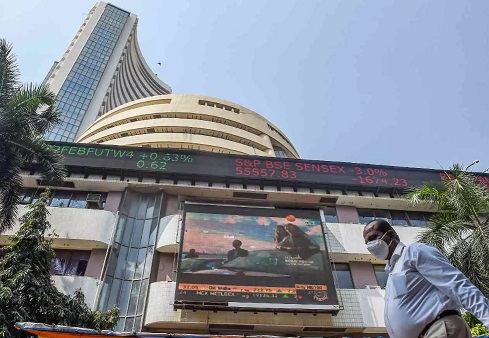
Robust performance, global economic uncertainty drive foreign portfolio investors to Indian markets

Unlike most equity markets across the globe, markets in India are witnessing an enviable trend. Notwithstanding rich valuations vis-à-vis peers in emerging markets, they continue to attract Foreign Portfolio Investors (FPI).
According to data from Motilal Oswal, over the past 12 months, the MSCI India Index (+7 per cent) has outperformed the MSCI Emerging Markets Index (-11 per cent). The MSCI Index is used to measure the performance of large- and mid-cap shares in Indian bourses and the MSCI Emerging Market Index measures those in emerging markets.
Data reveal that FPIs invested Rs 11,631 crore in Indian equities in April this year, and the total investments by them in May was pegged at Rs 43,838 crore, the highest in nine months. They have pumped in close to Rs 9,800 crore in Indian equities this month so far.
Rajesh Kumar Jain, Associate Director and Head of Private Client Business, Anand Rathi Group, says, “In the last two months of the previous financial year, there was a return of 9.46 per cent in the performance of the Nifty index. Indian equity markets have risen sharply, outperforming global peers.”
Long-term trend
This trend is expected to be for the long term for several reasons.
For one, the global economic picture is bleak. China’s recovery is in danger of slowing down, owing to the contraction witnessed in manufacturing and services. Despite strong job numbers in the United States, the country still has a fair share of woes. The consequences of the collapse of three banks led Federal Reserve Chair Jerome Hayden Powell to say that the negative impact of this crisis will likely influence Fed decisions in the months ahead.
Though inflation in Europe has cooled better than was forecast, stubborn price pressure is likely to persuade central bankers to decide on higher interest rates, going forward. Also, Europe’s economy just entered a technical recession after the eurozone bore two consecutive quarters of decline.
Rising optimism
Secondly, investors are getting increasingly optimistic about investing in India’s bourses.
Jain says, “Things are looking up for India. The latest GDP figure at 7.2 per cent for FY23 indicates that growth in the country’s economy is quite widespread. With the Reserve Bank of India pausing the interest (repo) rate in its June policy meeting, there are expectations that with lower inflation numbers, the central bank would cut interest rates before the end of the year. Also, as the country imports over 40 per cent of its crude requirement from Russia, the fall in crude prices is another positive.”
Also read: Share buyback from market is insidious; phased ban is the way to go
More FPI inflows are expected into the country’s bourses over the next five years. Jain anticipates an increase in India’s per capita income, a large part of which will flow into the markets. He believes that there will be increased participation of retail investors, using the SIP route, and an incremental part of pension fund money would also be invested in the bourses.
“Markets are trading at a 1-year forward P/E multiple of 20, which is slightly in a higher range versus the long-term average of 19.1. We can witness some kind of volatility and profit booking (selling) in stocks. Hence, the right strategy is to wait for the equity market to settle before we start building our portfolios for the next leg of the market’s rally,” he adds.

